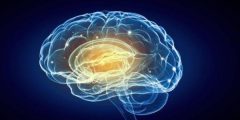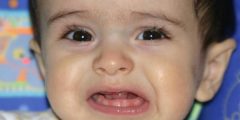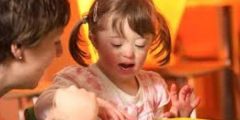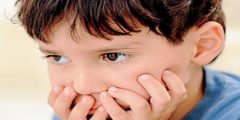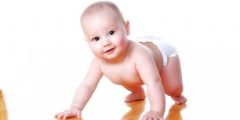stages of childhood
Childhood is the cornerstone of building an individual’s personality, as it is of great importance in achieving success or failure. This is why it was necessary to shed light on this period of an individual’s life, explain its most important stages, and the characteristics of each stage.
There are several definitions of childhood, including the following:
- The Oxford Dictionary defines childhood as: “the time when an individual is a child and lives a happy childhood,” as it defined a child as: “a newborn human being, whether male or female.”
- The Longman Dictionary defines childhood as: “the period of time that a person goes through when he is a child,” where he defined a child as: “a young person from the time of his birth until he reaches the age of fourteen or fifteen, and he is a son, or The daughter at any age.”
- Sociologists believe that childhood is: “the early period of human life in which the individual depends completely on his parents to maintain his life.” In it, he learns and exercises for the following period, and it is not important in itself, but rather it is a bridge through which the child passes until physiological, mental, psychological, social, moral, and spiritual maturity, during which the human life as a social being is formed.”
Among the definitions related to childhood as a whole, we can see that the draft United Nations Convention in its first article indicated that childhood is: “a stage in which a person does not bear the responsibilities of life, relying on parents and relatives to satisfy his organic needs, and on the school to provide care for life.” And it extends in time from birth until near the end of the second decade of life, and it is the first stage of the formation and growth of the personality, and it is a stage of control, control, and educational guidance.” As for the child, it was defined as: “Every human being under the age of eighteen unless he reaches the age of Adulthood before that under the law applicable to him.”
Read also:Article about children
Childhood stages and characteristics
early childhood stage
This stage extends from the end of the second year of the child’s life, until the beginning of the fifth or sixth year of his life, and it is considered an important stage that witnesses rapid growth, especially from a mental perspective, as the child develops the skill of forming social concepts, and increasing tendencies towards freedom and balance. , the emergence of the superego, the growth of the self, language, and other matters. It is worth noting that if this stage is normal and filled with emotional and psychological stability, then the child’s personality will become strong, developing, and blossoming. The following are the most prominent characteristics of this stage:
- Characteristics of physical and motor development: This growth is evident in several points, the most prominent of which are:
- Males gain more weight than females at this stage - although the weight increases seven times the weight at birth in both -; As a result of their muscle growth.
- The temporary teeth grow fully, and the child is able to eat.
- The child's bone growth increases, and his appearance changes from an infant to a young child.
- The development of the child's nervous system outpaces the rest of the systems in his body.
- The temporary teeth begin to fall out at the end of this stage, and the permanent teeth begin to take their place.
- At the age of three, a child is able to run, jump, and eat without assistance, respond to parental directions, and control the elimination process.
- A five-year-old child can have some control over the fine muscles, for example being able to hold a pen and draw straight lines in various directions.
- Characteristics of psychological development: This type of development is characterized by the development of his sense of initiative, and this depends on the child’s socialization. If he is given the freedom to explore what is around him without restriction, this would help achieve normality in his development, but if he is not able to do that, his feeling of guilt will develop.
- Characteristics of mental development: The child shows the following symptoms:
- The child forms various concepts, most of which are sensory, such as: number, time, place, and others, but what is abstract from them is not learned until later.
- The student is able to learn through trial, error, experience, etc., as he develops the ability to generalize within limits, which means an increase in the growth of his intelligence, noting that Piaget says that intelligence at this stage uses language clearly, and it is also Conceptually related to universal concepts.
- At this stage, the child's imagination becomes stronger than reality.
- At this stage, the child is able to remember simple sentences more than ambiguous ones, and he also develops the ability to remember the names of places, people, and things.
- He develops a thinking phase, or what is known as (the pre-operational phase), which is divided into two parts:
- The pre-conceptual period: This period extends from two to four years, and this stage is characterized by the fact that the child cannot use the point of view of others in his perception of things, which is known as (the characteristic of self-centeredness).
- The period of intuitive thinking: This period extends from the age of four to seven, during which the child relies on his general, unclear intuition, in addition to his imagination and senses, but he is freed from some of the defects that were in the previous stage.
- Emotional characteristics: It is characterized by a number of things, the most prominent of which are:
- Frequent and rapid emotions in the child, although they do not last for a long time. This is a result of internal factors, such as the child’s influence on those around him, or external factors, such as the way the parents deal with him.
- Feelings of fear that may hinder a child’s self-reliance or independence, if they are unnatural, but if they are natural, such as fear of animals, then it is healthy for him.
- The child's feelings of jealousy appear upon the arrival of a new baby, and feelings of anger, whether verbally or aggressively, and the child's sleep is unstable at this stage.
- Characteristics of social development: This type of growth is characterized by the following:
- Expanding the child’s social relationships, whether with his family or with his friends.
- The child learns many concepts and integrates into many activities and experiences that help him transform into a social being.
- The child acquires behaviors, values, attitudes, and morals. Because of the social methods of upbringing he is exposed to, such as: imitation, reward, punishment, and others.
- The child shows the characteristic of cooperation; Where he is aware of the presence of others.
- Some children are characterized by leadership and leadership, while others like isolation. This is because the child’s personality and characteristics have been formed when the date of his entry into school approaches.
- The child's close attachment to his mother appears; It is the source of satisfying his needs, but his dependence on it gradually decreases as he grows older, and he is able to increase his independence if he is able to walk and move.
- The child appears stubborn and disobedient, as do individual differences between females and males. We find that females become stubborn, while males become more destructive, and it is worth noting that the characteristics of nervousness and anger appear at this stage.
- The child develops the competitive characteristic, which reaches its peak at the age of five.
- At this stage, the child prefers independence in some aspects, such as eating and wearing clothes, but he remains largely dependent on others, bearing in mind that due to the difference in personal characteristics, this independence is not achieved for all children.
- Characteristics of linguistic development: This type of development helps the child express himself and interact with those around him, in addition to establishing social relationships and facilitating his cognitive and mental development. As speech is evidence of mental development, it is worth noting that a child’s linguistic development is affected by several factors, including: the availability of media, his interaction with adults, his interaction with his environment that surrounds him, and social gender. This is because females are considered to have better pronunciation and speak faster.
Read also:What is the treatment for constipation in children?
Middle childhood stage
This stage extends from the age of six to the age of nine, and is characterized by the following characteristics:
- Mental development: The child is able to perceive things completely, and relies on realistic thinking, abandoning imagination, in addition to relying on visual images in his thinking, and tends to assimilate and memorize.
- Physical growth: As the child’s body grows in terms of weight and height, he tends toward skills that require relying on muscles, and he is characterized by activity and vitality.
- Social development: He begins to become clearly independent from his parents, and becomes more interested in social work and cooperation. His relationships in his environment and school grow, noting that he becomes interested in searching for friends of the same gender.
- Sensory development: His sense of touch develops strongly, which helps him recognize the world around him.
- Emotional development: At this stage, the child is characterized by moderation in his moods, and he becomes more self-controlled and his emotions, and his self-confidence appears noticeably.
late childhood
This stage extends from the age of nine to the age of twelve, and is characterized by the following characteristics:
- Sensorimotor development: At this stage, the child is characterized by his tendency toward physical activity, and spends his time mostly outside the home. To practice his activities, such as riding bicycles, knowing that his sensory maturity reaches its peak when he reaches the age of nine, after which he becomes more in control of his fine muscles. Because of the maturity of his mental skills.
- Physical growth: At this stage, the child’s body grows, and his personality grows, so the physical proportions become similar to those of adults. For example, the limbs become long, and muscle growth increases. There is also a relative increase in both: weight by (10%) per year, and height by (5%). ) per year, in addition to the increased ability to combat diseases. It is worth noting that not all children enjoy the same method or rates of development.
- Linguistic development: His linguistic ability grows, and increases at the age of nine, both quantitatively and qualitatively. He learns to read and write, and his motor abilities grow at the age of ten, in addition to that he becomes inclined to write in an organized manner. It is worth noting that the environment in which the family lives and the educational conditions Both at school and at home affect the child’s vocabulary development.
- Mental development: The child develops a desire to discover secrets related to his environment that surrounds him, and he becomes more aware of the outside world, in a comprehensive way. He also becomes interested in interpreting relationships at the age of ten, which is characterized by being intellectually more advanced than what characterizes the eighth and ninth stages of description, in addition to His thinking becomes functional and practical, leading to pure thinking in the end. It is worth noting that the child develops the ability to abstract, so his thinking related to sensory things decreases clearly.
- Emotional and social development: It is the stage of emotional stability and constancy, as in this stage the child’s ability to control his emotions and self-control appears. He learns how to give up needs that may lead to the anger of his parents, or others, and suggestive emotional tendencies develop in him, so he is concerned with moral evaluation, conscience, and other matters. It is worth noting that at this stage his mixing with adults and friends increases, while being careful to befriend those of the same social gender. He also spends a large amount of time in group work.
- Religious and moral development: At this stage, the child develops religious concepts and the knowledge that God is the Creator of the entire universe. He also realizes that Paradise is a reward for those who do good, and Hell is a punishment for those who follow the path of evil, knowing that it is the duty of parents, and everyone involved in upbringing, to follow the path of moderation. In this religious education, while being careful not to assign them anything they cannot bear, it is worth noting that the child acquires the moral values that he received in his school and his family, such as honesty, honesty, and others.

